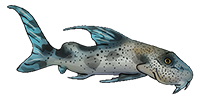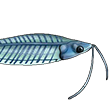TDS or KH GH readings
- eupterus
- Posts: 176
- Joined: 17 Apr 2005, 23:18
- Location 1: Essex uk
- Interests: Livebearers, corys and L numbers
TDS or KH GH readings
I am interested in opinions on hardness of water. Which would people feel is best to test for. TDS, KH or GH readings I accept that they are all integrally related but wanted some opinions. I am leaning towards TDS as a one size fits all indication of hardness.
Eupterus.
C. hastatus - habrosus - pygmaeus - aeneus - duplicareus - axelrodi - panda - trilineatus - napoensis - delphax - melini - paleatus - barbatus - concolor - robinae -seussi - reynoldsi - septentrionalis - arcuatus - C57 "nordestini" - guapore - aeneus "black" - C131
C. hastatus - habrosus - pygmaeus - aeneus - duplicareus - axelrodi - panda - trilineatus - napoensis - delphax - melini - paleatus - barbatus - concolor - robinae -seussi - reynoldsi - septentrionalis - arcuatus - C57 "nordestini" - guapore - aeneus "black" - C131
- MatsP
- Posts: 21038
- Joined: 06 Oct 2004, 13:58
- My articles: 4
- My images: 28
- My cats species list: 117 (i:33, k:0)
- My aquaria list: 10 (i:8)
- My BLogs: 4 (i:0, p:164)
- Spotted: 187
- Location 1: North of Cambridge
- Location 2: England.
It all depends on WHY you're wanting to get a reading.
I would say that you're realy interested in two things:
Conductivity and buffering capacity (KH).
Long explanaton to follow:
GH is useful to get a general idea of what the water is like - it's also roughly comparable to TDS - but not necessarily directly the same, since some all salts count on TDS but not all count on GH.
KH is the buffering capacity of the water - you can have a VERY high TDS/GH reading with no buffering capacity at all - although the opposite is pretty hard to achieve (could possibly be done using buffers that are based on compound that do not register on a GH - but certainly TDS would register any salt that is in the water, whether it's buffering or not, and hardening or not).
TDS is really a "rescaled" conductivity measure - i.e. someone has decided that X µS corresponds to Y ppm of disolved salts. This is based on some sort of "idealized view" of what salts would normally be in water, and it's certainly useful to say if the water is high or low in dissolved salts. However, if you took a water sample to a lab and they gave you an exact measurement of it's "Total dissolved solids", it would almost certainly not match what your meter read. How close or far away it is depends on what the contents is in the water. It would of course be in the same general range (if your TDS meter shows 100 ppm, then the lab-test would probably show something between 75 and 150 ppm, for example, and if your TDS meter shows 10 ppm, the lab test would probably be around 7.5 to 15 - which is good enough for us fishkeepers).
But what the fish really "care about" is the conductivity and the water's ability to keep the pH stable. Since the first is measured (rescaled) by a TDS meter or a conductivity meter, you should aim to get one of them. The latter is (generally) possible to determine with a KH test, which is why you also want one of them - at least if you run water with low conductivity/hardness as this is when you are most likely to suffer from buffering problems. Running southern england tap-water in a tank will definitely have enough buffering capacity - unless you never change water in the tank, but even then the pH change would be slow enough that the fish will be fine with that too - obviously assuming they don't die from nitrate poisoning...
I hope this helps.
--
Mats
I would say that you're realy interested in two things:
Conductivity and buffering capacity (KH).
Long explanaton to follow:
GH is useful to get a general idea of what the water is like - it's also roughly comparable to TDS - but not necessarily directly the same, since some all salts count on TDS but not all count on GH.
KH is the buffering capacity of the water - you can have a VERY high TDS/GH reading with no buffering capacity at all - although the opposite is pretty hard to achieve (could possibly be done using buffers that are based on compound that do not register on a GH - but certainly TDS would register any salt that is in the water, whether it's buffering or not, and hardening or not).
TDS is really a "rescaled" conductivity measure - i.e. someone has decided that X µS corresponds to Y ppm of disolved salts. This is based on some sort of "idealized view" of what salts would normally be in water, and it's certainly useful to say if the water is high or low in dissolved salts. However, if you took a water sample to a lab and they gave you an exact measurement of it's "Total dissolved solids", it would almost certainly not match what your meter read. How close or far away it is depends on what the contents is in the water. It would of course be in the same general range (if your TDS meter shows 100 ppm, then the lab-test would probably show something between 75 and 150 ppm, for example, and if your TDS meter shows 10 ppm, the lab test would probably be around 7.5 to 15 - which is good enough for us fishkeepers).
But what the fish really "care about" is the conductivity and the water's ability to keep the pH stable. Since the first is measured (rescaled) by a TDS meter or a conductivity meter, you should aim to get one of them. The latter is (generally) possible to determine with a KH test, which is why you also want one of them - at least if you run water with low conductivity/hardness as this is when you are most likely to suffer from buffering problems. Running southern england tap-water in a tank will definitely have enough buffering capacity - unless you never change water in the tank, but even then the pH change would be slow enough that the fish will be fine with that too - obviously assuming they don't die from nitrate poisoning...
I hope this helps.
--
Mats




